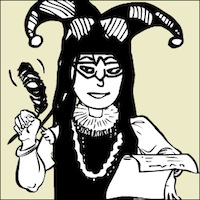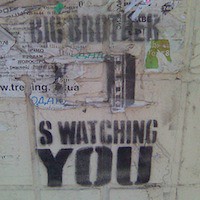Bridget Bishop is Executed as a Witch - June 10

Today is Thursday, June 10, 2010. It was this day in history in 1692 that the first woman accused of being a witch was hung in Salem, Massachusetts. Bridget Bishop was accused of witchcraft and practicing black magic along with being accused of bewitching men and children.
Born sometime during 1632 and 1637, Bridget Bishop had always been described as a little bit different and a person of “dubious moral character.” She dressed flamboyantly of the times with her black cap, a black hat and a scarlet colored bodice. She was a member in good standing in Mr. Hale’s church but notwithstanding that fact, she was always grist for the rumor mill. She not only dressed flamboyantly but she lived a flamboyant lifestyle. She publicly fought with each of her husbands, partied with guests in her home until late into the night and was reportedly associated with two taverns in the town.
Bridget Bishop was married three times. Her first husband was Goodman Wasslebee and when he died, Bridget Bishop was accused of bewitching him to death. In1679, she married a second time to a man named Thomas Oliver. In 1680, Bridget Bishop was formally accused of witchcraft and was brought before the Court of Assistants. She was found innocent of the charges and shortly after that, her second husband died. Notwithstanding her being accused of witchcraft, she married a third and final time to a lumber worker named Edward Bishop. He would later on accuse her of being a witch as well.
The accusations came fast and furious as several people had “evidence” against her. A warrant was issued for her arrest on April 18, 1692. During her trial, a couple of men that she had hired to take down a wall in a basement of an old house that she had previously lived in, had said that they discovered some holes in the wall which housed makeshift dolls made of cloth and hog’s hair and the dolls had pins stuck in them with the points sticking out. The local dyer also said in court that Bridget had brought in pieces of lace to be dyed but were too small to be worn by women and could be used for dolls.
When she had finally met her accusers in court, the girls that accused her began to writhe in supposed pain and cried out as well. Her sister’s husband was an accuser as well. He stated that Bridget would stay up all night talking with the devil. She was found guilty of being a witch and sentenced to die by hanging. On June 10, 1692, a crowd gathered as she was led to Gallows Hill and executed by the sheriff, George Corwin. She, like most women accused of witchery, maintained her innocence right to the very end.
Born sometime during 1632 and 1637, Bridget Bishop had always been described as a little bit different and a person of “dubious moral character.” She dressed flamboyantly of the times with her black cap, a black hat and a scarlet colored bodice. She was a member in good standing in Mr. Hale’s church but notwithstanding that fact, she was always grist for the rumor mill. She not only dressed flamboyantly but she lived a flamboyant lifestyle. She publicly fought with each of her husbands, partied with guests in her home until late into the night and was reportedly associated with two taverns in the town.
Bridget Bishop was married three times. Her first husband was Goodman Wasslebee and when he died, Bridget Bishop was accused of bewitching him to death. In1679, she married a second time to a man named Thomas Oliver. In 1680, Bridget Bishop was formally accused of witchcraft and was brought before the Court of Assistants. She was found innocent of the charges and shortly after that, her second husband died. Notwithstanding her being accused of witchcraft, she married a third and final time to a lumber worker named Edward Bishop. He would later on accuse her of being a witch as well.
The accusations came fast and furious as several people had “evidence” against her. A warrant was issued for her arrest on April 18, 1692. During her trial, a couple of men that she had hired to take down a wall in a basement of an old house that she had previously lived in, had said that they discovered some holes in the wall which housed makeshift dolls made of cloth and hog’s hair and the dolls had pins stuck in them with the points sticking out. The local dyer also said in court that Bridget had brought in pieces of lace to be dyed but were too small to be worn by women and could be used for dolls.
When she had finally met her accusers in court, the girls that accused her began to writhe in supposed pain and cried out as well. Her sister’s husband was an accuser as well. He stated that Bridget would stay up all night talking with the devil. She was found guilty of being a witch and sentenced to die by hanging. On June 10, 1692, a crowd gathered as she was led to Gallows Hill and executed by the sheriff, George Corwin. She, like most women accused of witchery, maintained her innocence right to the very end.

Related Articles
Editor's Picks Articles
Top Ten Articles
Previous Features
Site Map
Content copyright © 2023 by Vance Rowe. All rights reserved.
This content was written by Vance Rowe. If you wish to use this content in any manner, you need written permission. Contact Lane Graciano for details.







